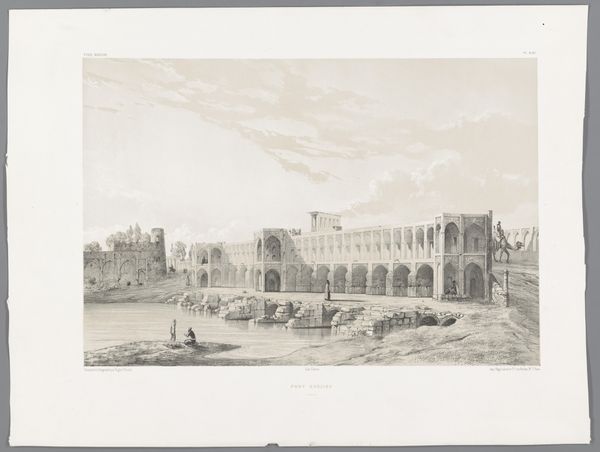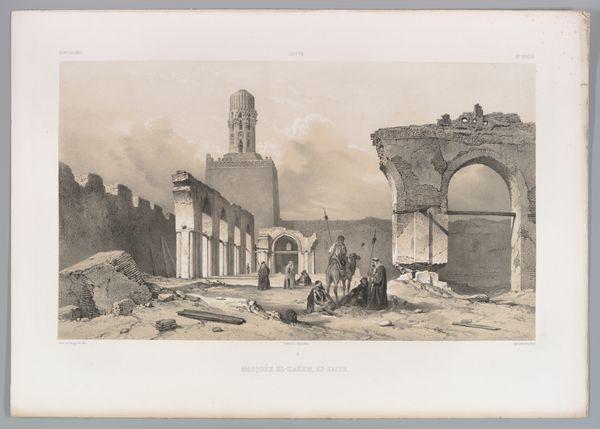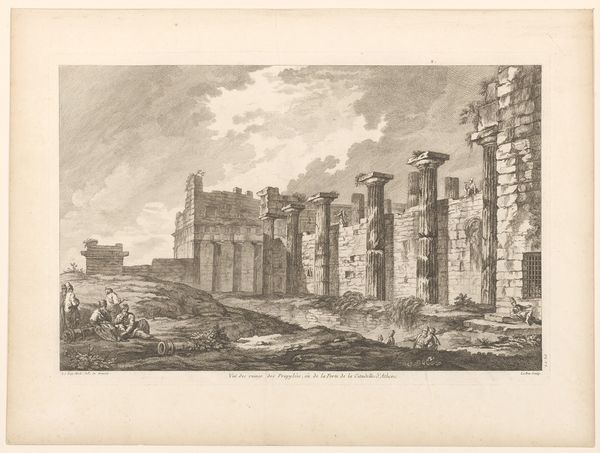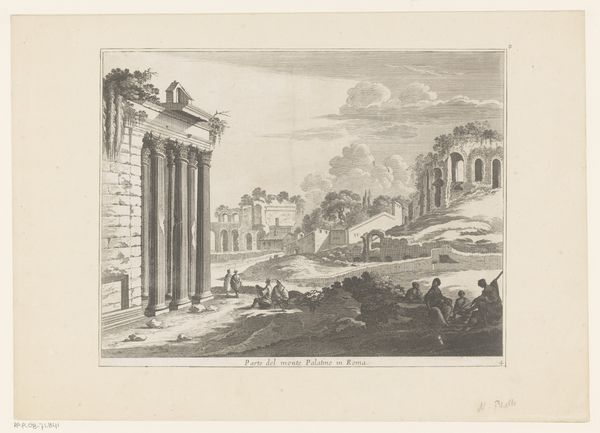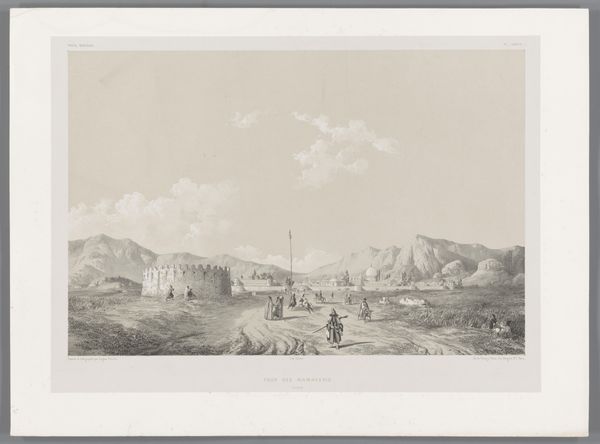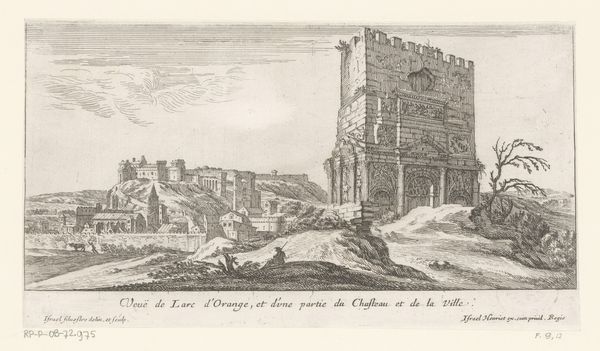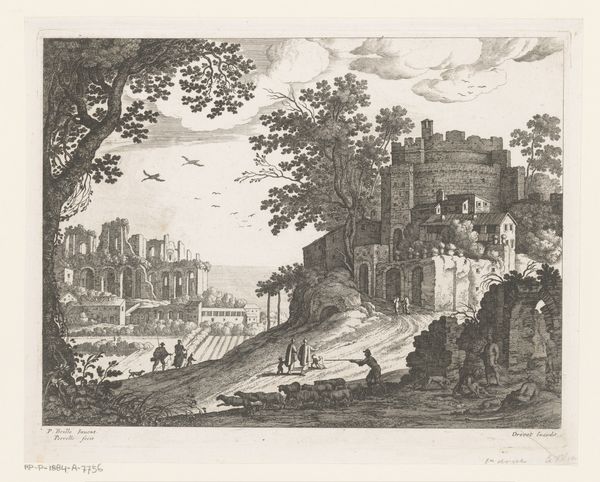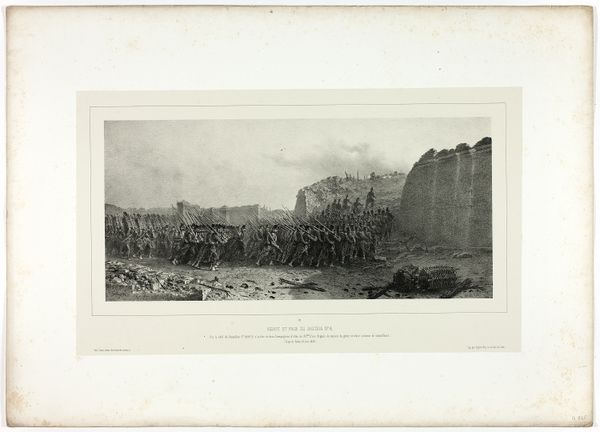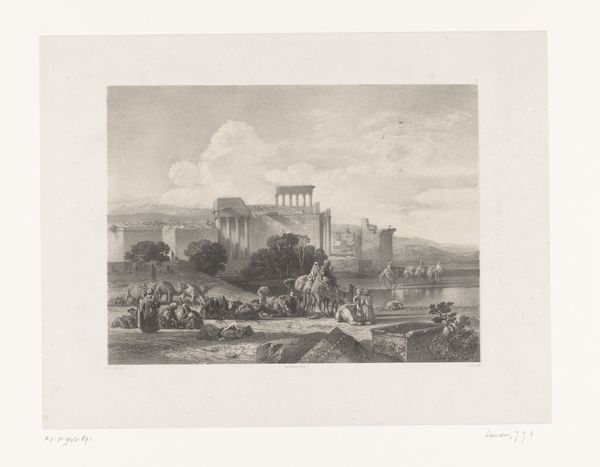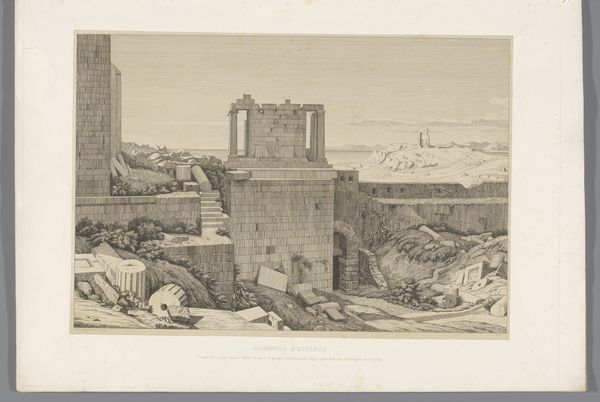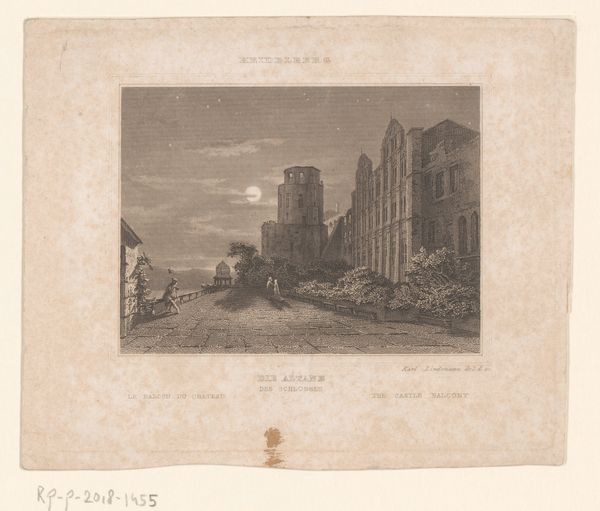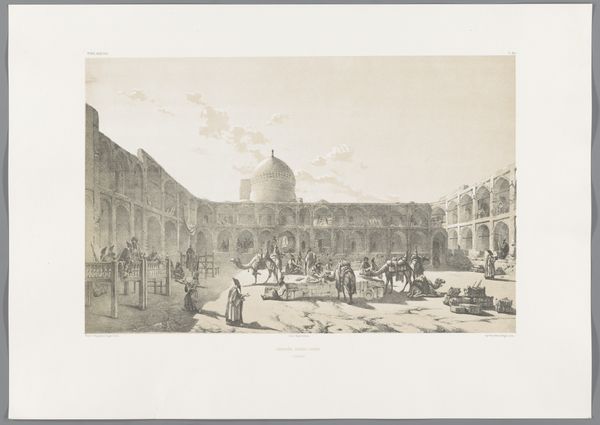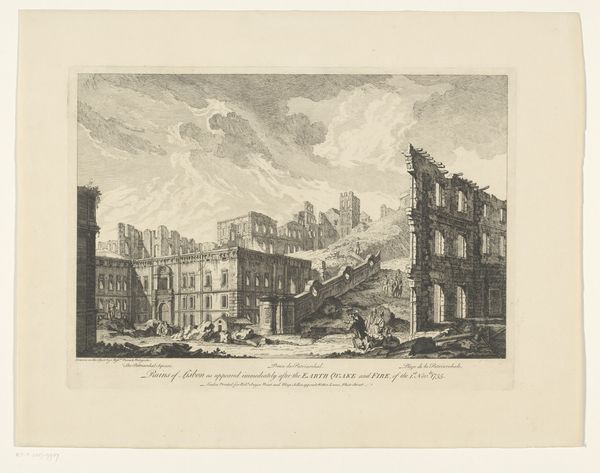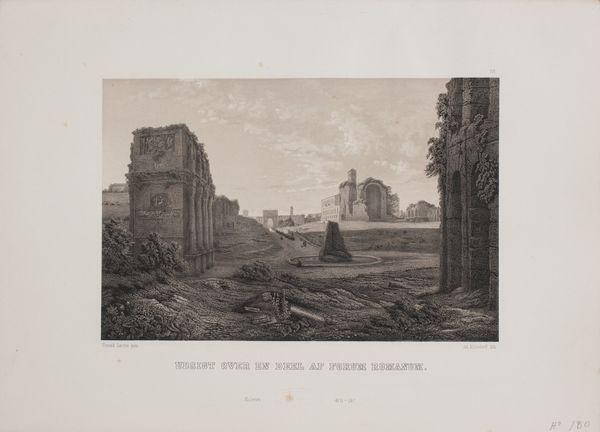
Rome: The Coliseum and the Arch of Constantine, plate 38 from Italie Monumentale et Pittoresque c. 1848
0:00
0:00
drawing, lithograph, print, paper
#
drawing
#
lithograph
# print
#
landscape
#
paper
#
romanesque
#
cityscape
Dimensions: 270 × 406 mm (image/tint stone); 396 × 566 mm (sheet)
Copyright: Public Domain
Curator: Let's turn our attention to Nicolas Chapuy's lithograph, "Rome: The Coliseum and the Arch of Constantine," created around 1848. It’s plate 38 from his “Italie Monumentale et Pittoresque” series, held here at the Art Institute of Chicago. Editor: The subtle gradation of light is the first thing I notice, a very sophisticated use of value. It creates a soft, almost nostalgic atmosphere, despite the grandeur of the subject matter. Curator: Indeed. Consider that Chapuy was part of a wave of artists responding to a burgeoning tourist industry. Rome, with its rich history and architectural wonders, became a must-see destination. Prints like these catered to that market. They were more than just souvenirs; they framed a certain romantic vision of the city. Editor: The composition reinforces that. The eye is drawn along a diagonal, from the Colosseum to the Arch, the figures acting as intermediaries, almost directing our gaze, activating that space. It's all quite theatrical. Curator: Absolutely. Notice also how Chapuy juxtaposes the imposing scale of these ancient monuments with everyday life, including figures at leisure and groups who may be pilgrims on tours. Editor: The ruins, in their weathered state, are contrasted by the clear linear precision achieved through the lithographic process, it highlights the theme of decay. There's something inherently melancholic about seeing these symbols of power in partial ruin. Curator: It also tells us something about how Rome was being perceived at the time. As Europe modernized, artists like Chapuy sought to capture the glory and grandeur of antiquity before it disappeared or was irreversibly changed by modern developments. The prints themselves played a part in establishing this narrative, defining cultural heritage and national identity in France through depictions of other European monuments. Editor: So it functions both as an image of Rome, and an index to contemporary politics of culture? Fascinating! I initially saw formal strategies, but the layering is rather intense now that I see these juxtapositions. Curator: Exactly. So next time you are faced with lithograph, maybe ask yourself why THIS scene, and consider it's context of production and distribution! Editor: A perfect invitation to reflect and now to examine the artist's intentions from varied points of view. Thank you.
Comments
No comments
Be the first to comment and join the conversation on the ultimate creative platform.
